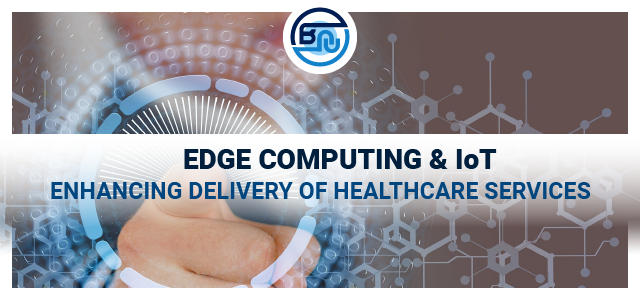
Cloud technology has helped transform IT operations in businesses over the past few years, with access to reliable, easily scalable and highly powerful computing resources. The adoption of internet of things (IoT) devices has further expanded the scope of implementing enterprise-wide cloud technology. However, the tremendous rise in data collection and management requires substantially improved processing speeds and computing power, rendering centralized cloud irrelevant in many cases and prompting the shift towards edge computing.
Recently, German manufacturer Rittal inked a partnership with Siemens and Atos for developing Intelligent Edge Data Center (IEDC) solutions to allow real-time IoT data processing by companies. Technologies to be deployed here would include the Atos Codex Cloud Industrial Supervision and BullSequana Edge computing server provided by Atos, along with open IoT operating system MindSphere supplied by Siemens. The companies have identified various applications for the IEDC solutions, such as smart retail and smart healthcare, with considerable prospects anticipated post 5G network roll outs.
The IEDC is primarily aimed at businesses which have already taken steps towards digital transformation and warrant large data processing needs in real-time. Healthcare could turn out to be an ideal application segment for such projects, considering the fact that the sector contributes nearly 30% of the total data gathered worldwide. Although slow to pick up the trend, healthcare has begun adopting digital technology to improve patient care through IoT devices used for record keeping, monitoring of patients and telemedicine, among others.
With healthcare expenditures rising continuously, having hit the US$7.7 trillion mark globally in 2017, edge computing in healthcare could offer considerable opportunities to hospitals, clinics and medical professionals for enhancing patient outcomes.
Outlining the role of edge computing in future of healthcare
Described below are three key application areas in health industry where computing on network edge will deliver remarkable efficiency and results to organizations:
1. Supply chain management:
From critical medical equipment and supplies to advanced surgery tools, any kind of hindrance to the hospital supply chain can risk the health of patients. Deployment of IoT devices equipped with powerful sensors is expected to drastically change how facilities can manage inventories. For instance, using smart RFID tags on supplies can not only eliminate unnecessary paperwork but also make it easier to record and track movement of the products.
On similar lines, devices connected to sensors on fleet vehicles will enable real-time tracking of critical shipments. Supposedly, data collected by IoT devices can be processed on the edge for using predictive analysis, further helping organizations to save costs and avoid delays in providing treatments. According to a Cardinal Health survey, hospital supply shortages led to 69% of respondents delaying care to patients in 2018, indicating the existing need for efficient supply chain management solutions.
2. Process device-generated health data:
Edge computing is considered as a breakthrough technology to leverage IoT in healthcare for enhanced delivery of care. Wearables and other medical devices are become a common trend worldwide, for measuring heart rates, blood pressure, glucose levels and other vital health metrics. These IoT edge devices offer enormous amounts of patient generated health data, which is used by medical professionals to monitor patient progress or diagnose problems faster and more accurately.
Since a major portion of this data is unstructured and not properly defined, edge computing solutions can process and organize the information much faster as compared to sending them to a central server, enabling a quick response in critical cases. This is also applicable for implantable medical devices and those sold by consumer electronics manufacturers. Continuous glucose monitoring is an innovative edge computing healthcare application where edge computing can help create personalized treatment options using real-time data.
3. Remote healthcare services:
In emerging economies, as well as some regions in the developed countries, providing quality healthcare to remote places and rural areas is still difficult via traditional methods. Introduction of telemedicine products has allowed healthcare providers to reach these areas and deliver necessary services, but problems associated with connectivity have limited their capabilities and affected the quality of treatments. It is believed that combining portable IoT healthcare equipment with edge computing will address these challenges.
Essentially, IoT devices developed by medical device manufacturers and edge computing firms will be able to collect, store and analyze data to produce crucial patient reports without having to stay connected to a central network infrastructure. Novel health care devices would interact with local edge data centers, expanding network reach and allowing remote doctors to access patient information in rural areas.
Undoubtedly, healthcare sector will emerge as one of the most promising application domains for edge computing providers, to offer innovative data handling abilities and ensure uninterrupted delivery of patient care.

With a commendable experience of content creation under his belt, Pankaj Singh, a qualified Post Graduate in Management, boasts of having worked as a freelance writer and an insurance underwriter. Additionally, Pankaj has also enriched his qualification portfolio with Read more...
© 2025 business-newsupdate.com. All Rights Reserved.